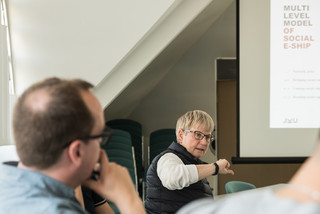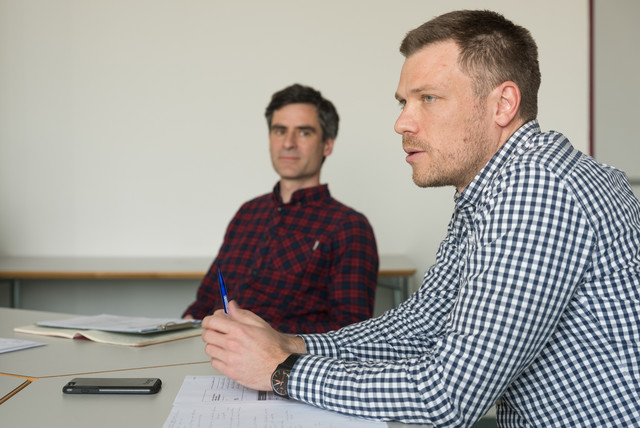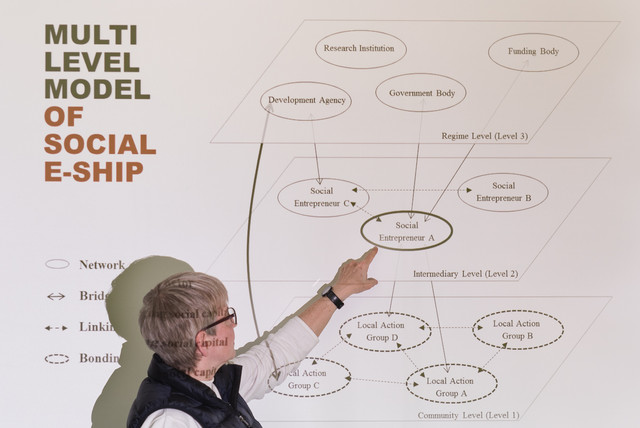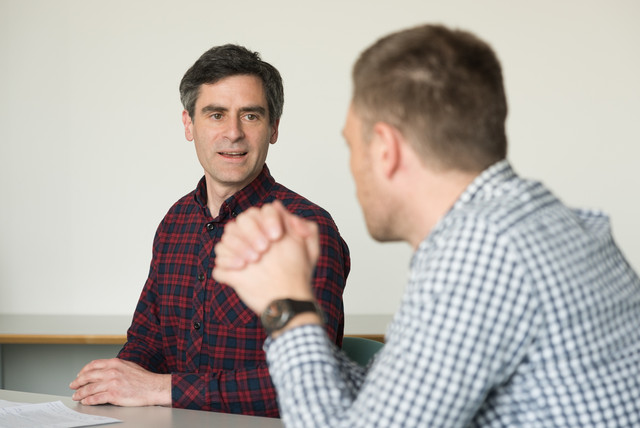Main Content
Interconnected on Many Levels
Social Entrepreneurship in Rural Regions

In a seminar held at the Leibniz Institute for Research on Society and Space (IRS) Dr. Richard Lang, Assistant Professor at the Institute for Innovation Management (IFI) at Johannes Kepler University Linz (JKU), introduced a multi-level model for social entrepreneurship in rural regions and their institutional environment. Lang developed the model together with Prof. Matthias Fink (IFI) referring to concepts rooted in regional and rural development, social entrepreneurship, innovation, social capital and network research. Empirical evidence comes from research in four marginalized rural regions in Europe in the context of the EU-funded project “RurInno”, in which the IRS and IFI are leading research partners. The seminar was part of the visiting fellowship Richard Lang has spent at the IRS between 16th and 20th of April, 2018.
Recent entrepreneurship literature has highlighted the innovative and problem-solving capacity of social entrepreneurs as promising new actors who tackle the socioeconomic problems of structurally weak rural regions and induce sustainable change. Lang and Fink developed a more nuanced and multilevel understanding of the social network arena in which the rural social entrepreneur operates. Their multi-level model encompasses three levels: on the community level groups of actors are formed by bonding of people with similar interests and competencies. On the other end of the spectrum Lang allotted the regime level, where government bodies, research institutes, development agencies and funding organisations operate. On the intermediary level social entrepreneurs strive to connect community and regime levels to achieve their social and entrepreneurial goals. For Lang, important features of the model are the different types of relations and connections between network actors. He differentiates between bonds, bridges and links: In contrast to bonds, links and bridges are formed between actors with different characteristics. This allows for complementary competencies to be combined. Linking is seen as a special form of bridging, where the connection is established vertically across the different levels.

Lang’s input stimulated a lively discussion with IRS scholars, for example on the spatial aspects of the introduced multi-level model. The audience raised the question whether the model takes into account spatial characteristics. The community level for instance seems to be rooted in local or regional contexts while the regime level might be present on all spatial scales from the local to the supra-national level. Lang’s and Fink’s model focuses on competencies and power of actors in networks, the integration with spatial models was unanimously considered promising. Other topics of the discussion touched theories and concepts of social capital, which Lang identified as a crucial point for his model, the necessities of acting as intermediaries and the “gaps” between the levels. Lang thanked for the vivid discussion that provided valuable hints for future advancement of the model. Dr. Ralph Richter and Prof. Dr. Gabriela Christmann, who collaborated with Lang and Fink in the “RurInno” project, suggested a combination with the model of embedded intermediaries they developed in the project.





